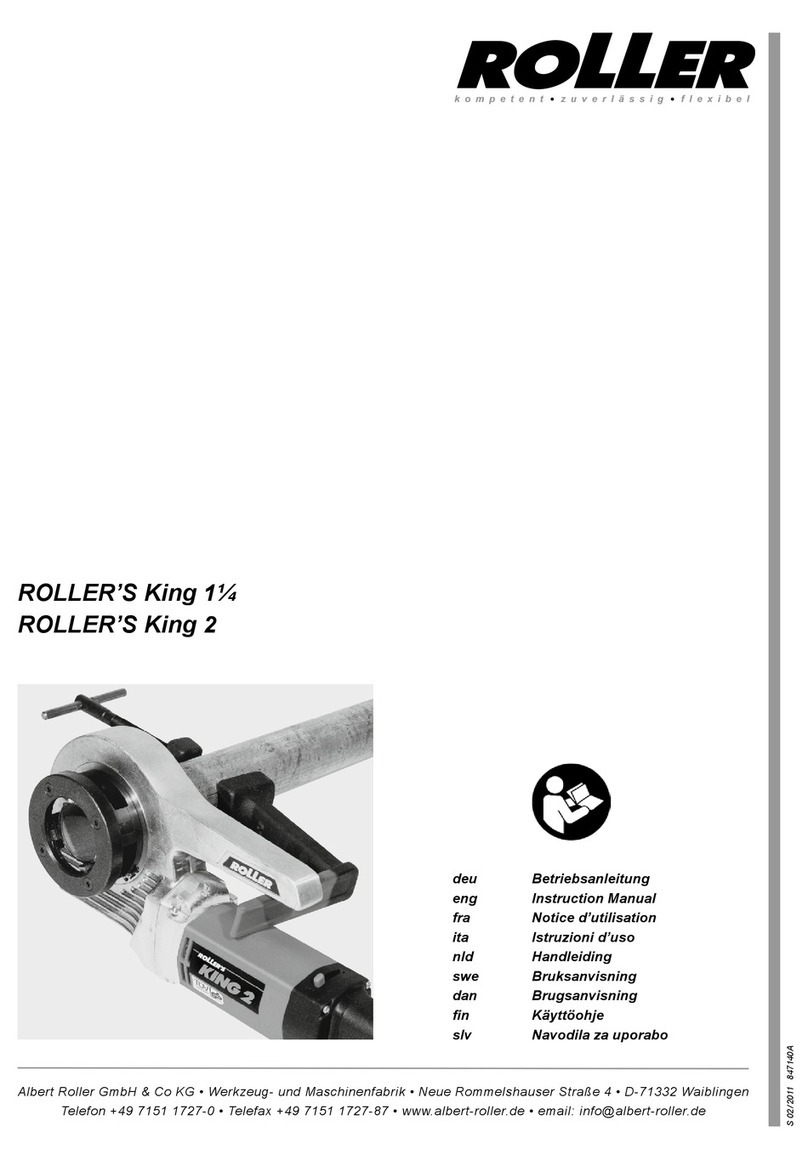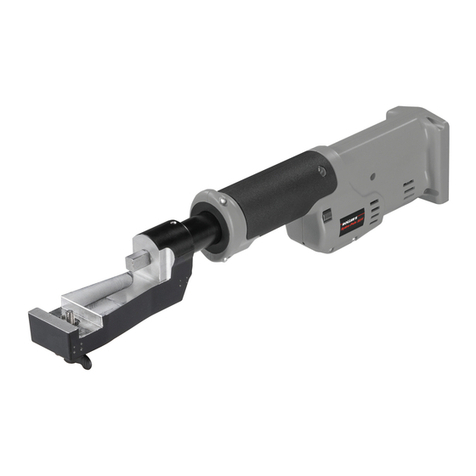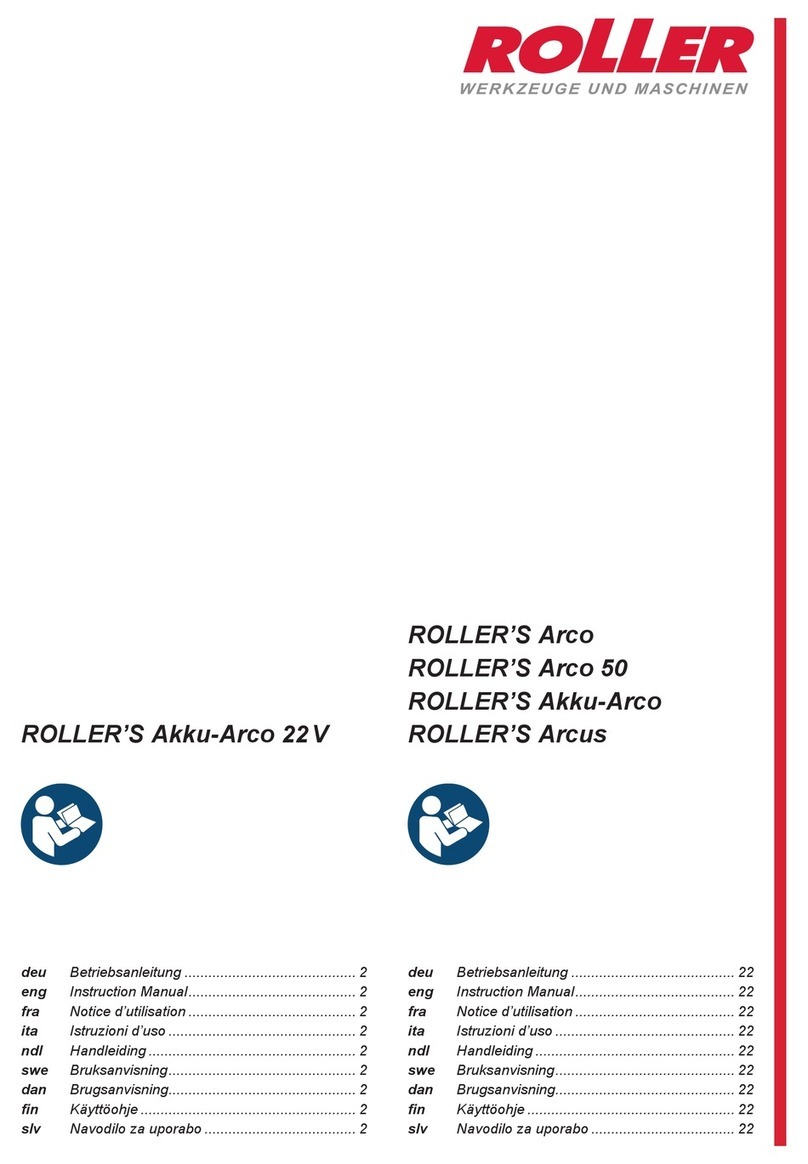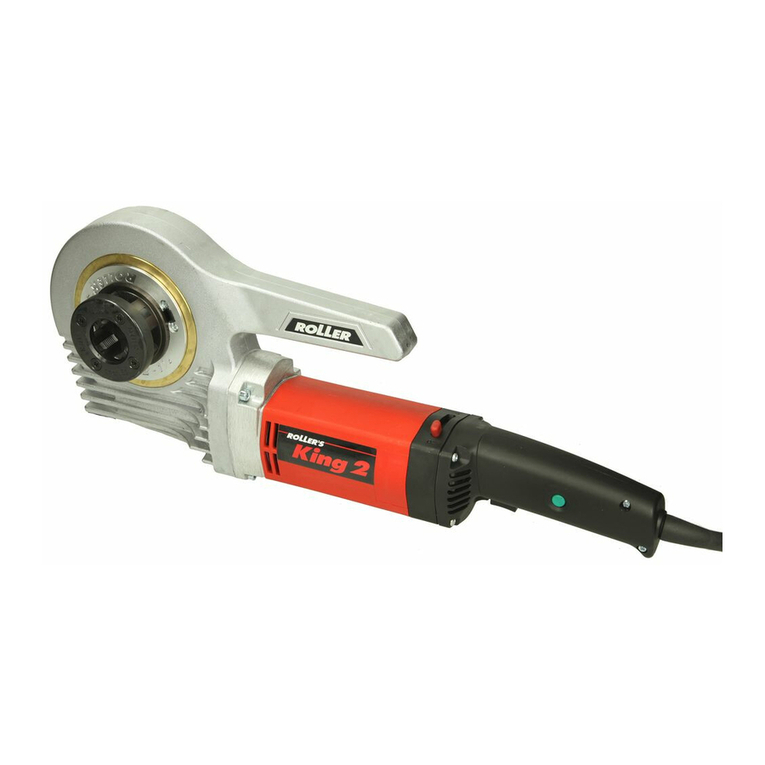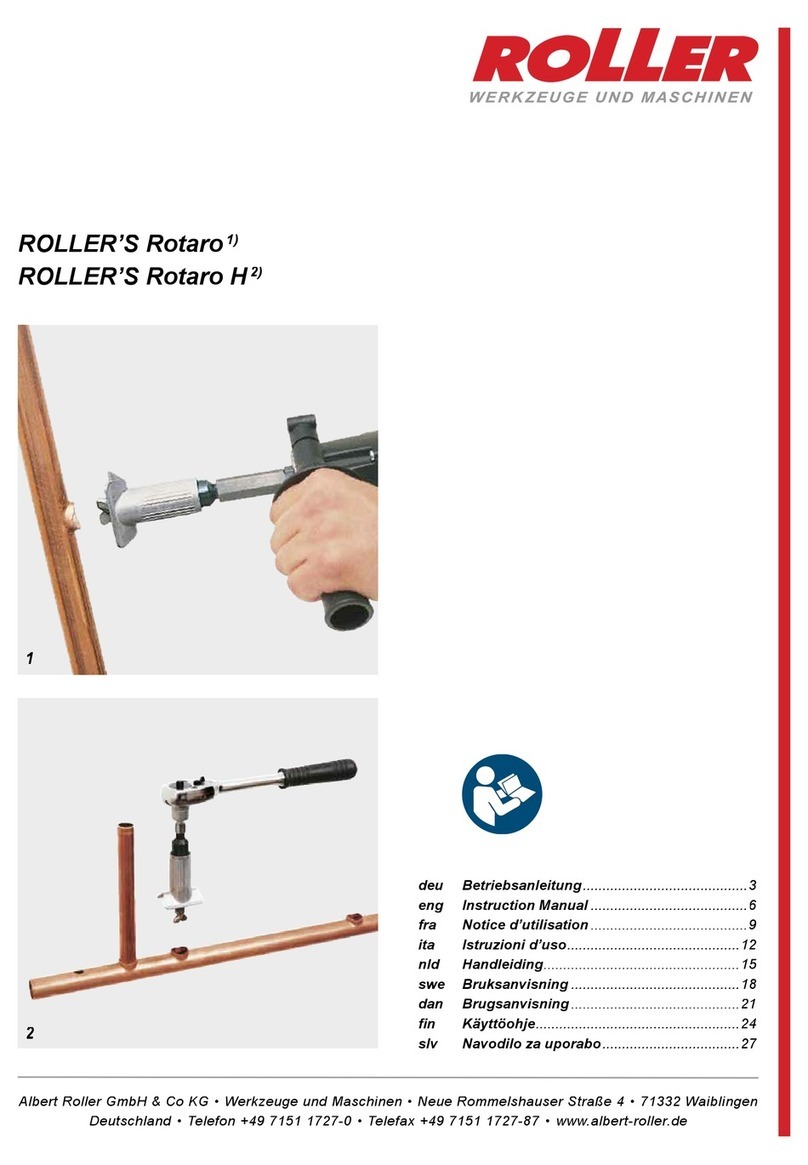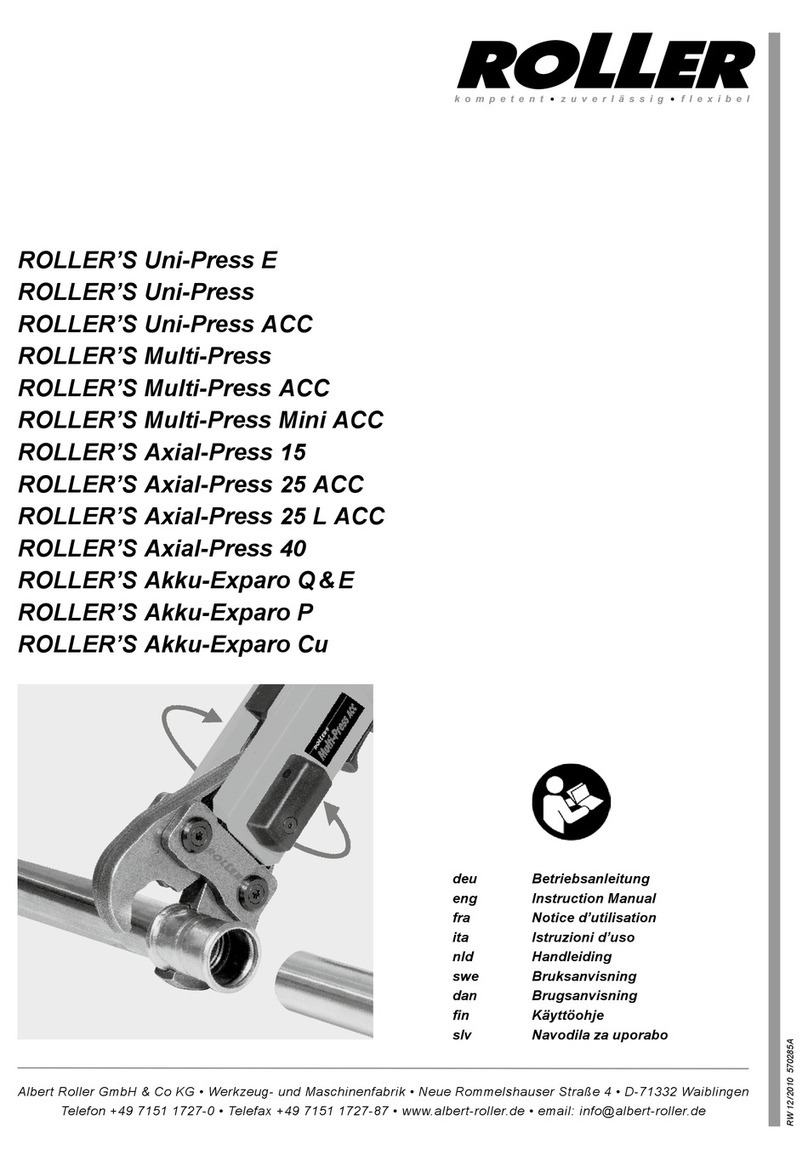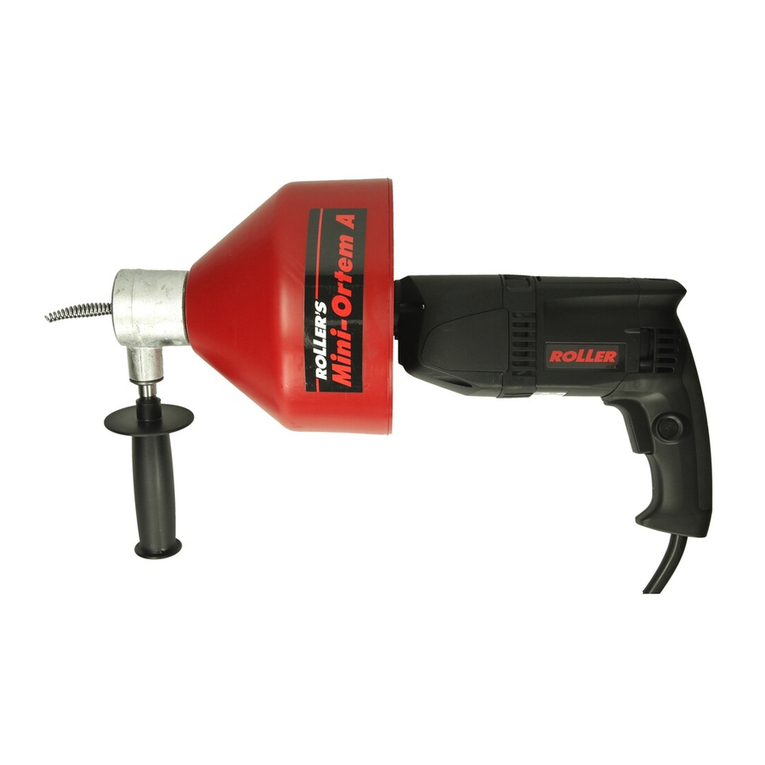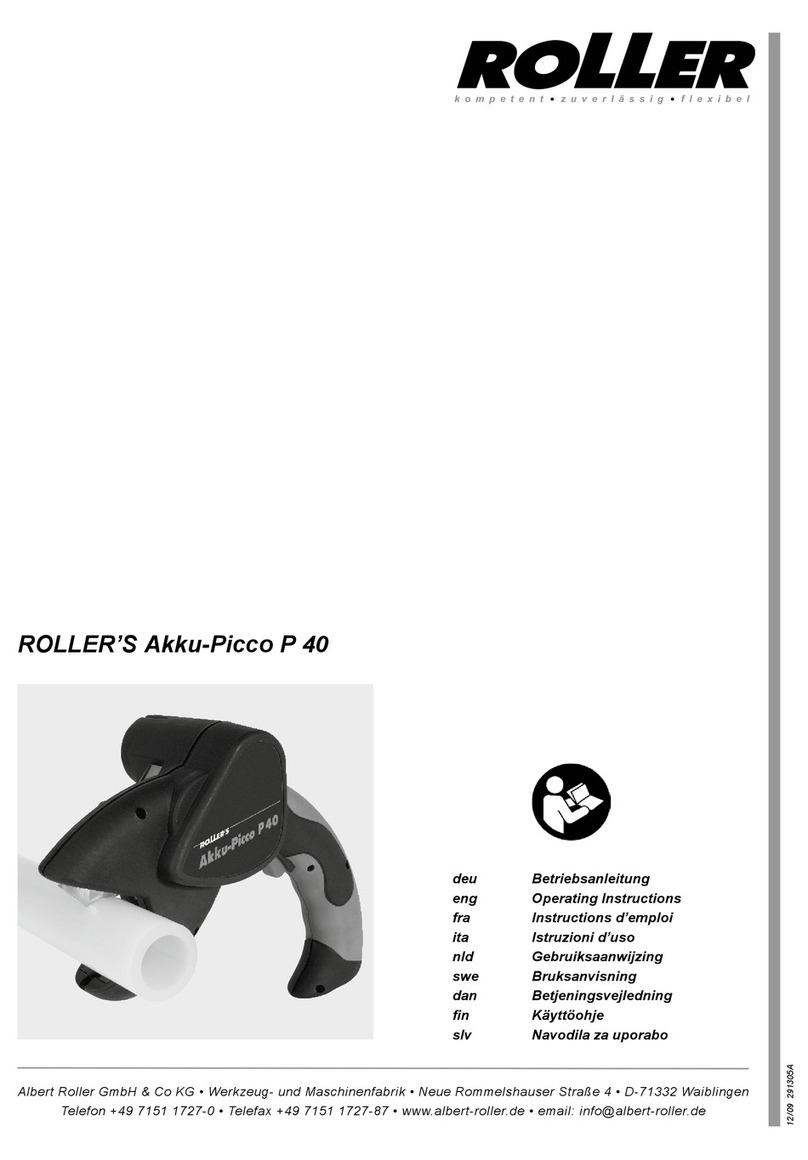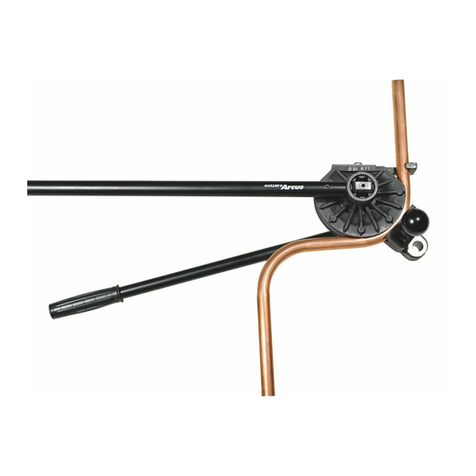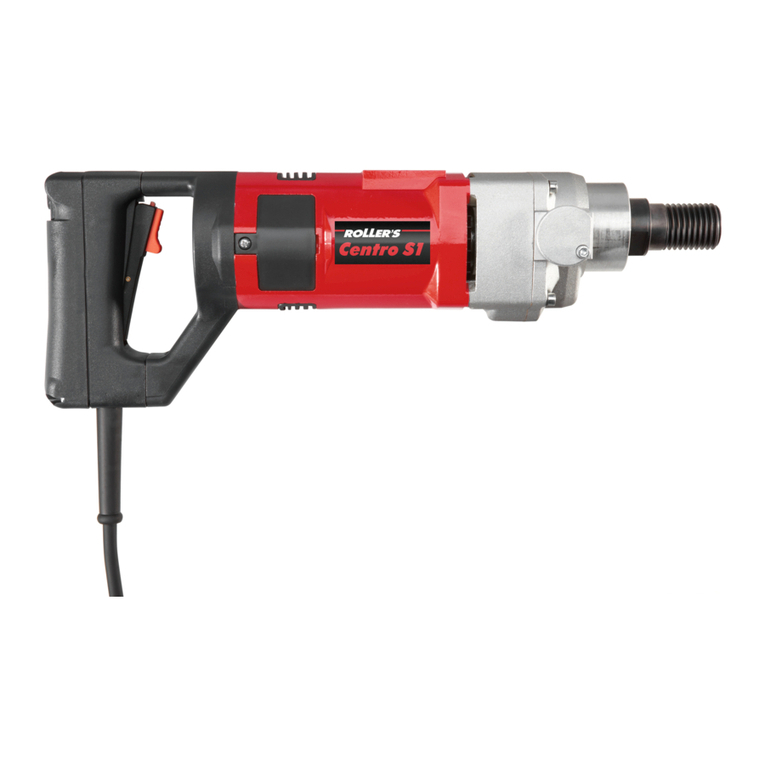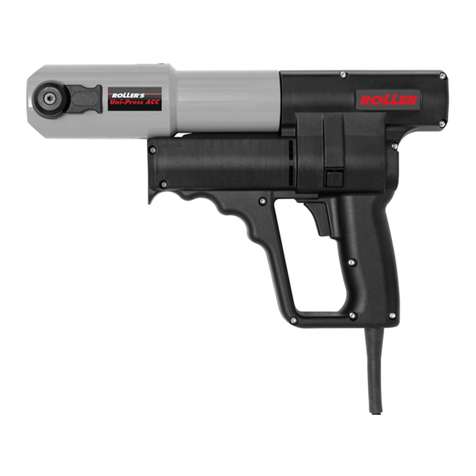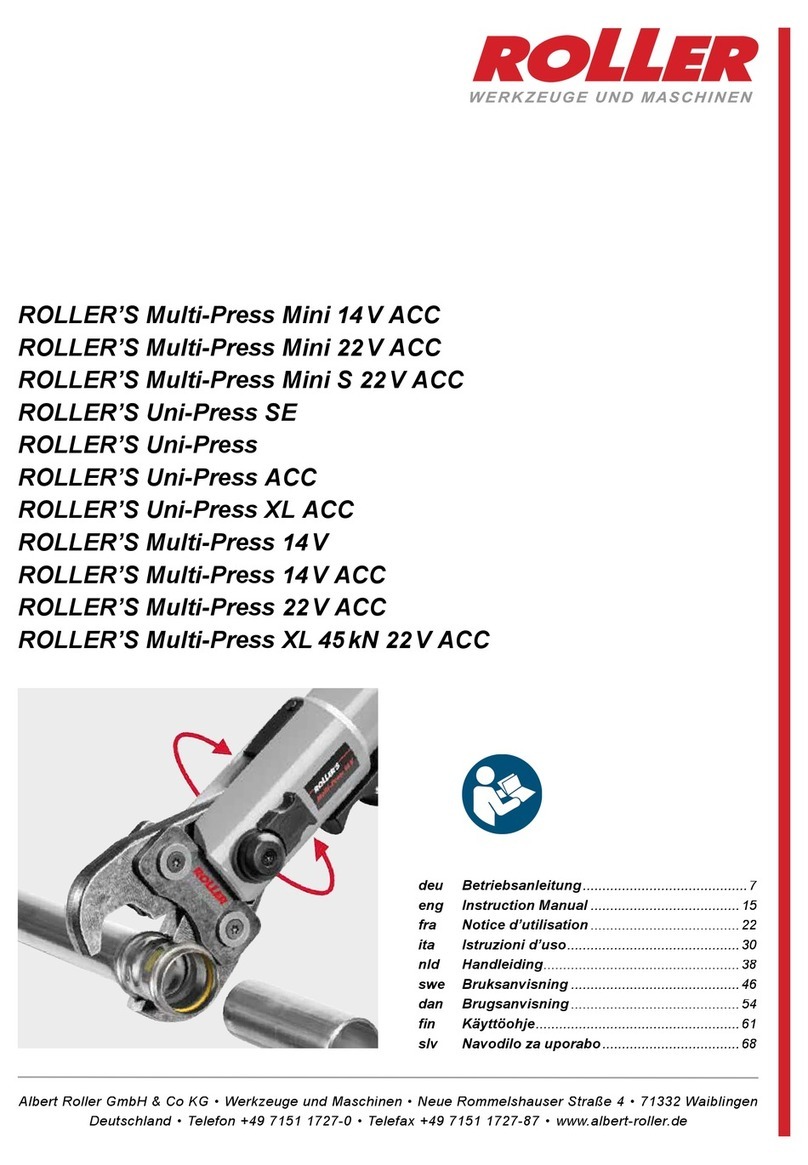
deu deu
Originalbetriebsanleitung
Allgemeine Sicherheitshinweise
ACHTUNG! Sämtliche Anweisungen sind zu lesen. Fehler bei der Einhaltung der
nachstehend aufgeführten Anweisungen können elektrischen Schlag, Brand und/
oder schwere Verletzungen verursachen. Der nachfolgend verwendete Begriff
„elektrisches Gerät“ bezieht sich auf netzbetriebene Elektrowerkzeuge (mit Netz-
kabel), auf akkubetriebene Elektrowerkzeuge (ohne Netzkabel), auf Maschinen und
auf elektrische Geräte. Verwenden Sie das elektrische Gerät nur bestimmungsgemäß
und unter Beachtung der allgemeinen Sicherheits- und Unfallverhütungsvorschriften.
BEWAHREN SIE DIESE ANWEISUNGEN GUT AUF.
A) Arbeitsplatz
a) Halten Sie Ihren Arbeitsbereich sauber und aufgeräumt. Unordnung und
unbeleuchtete Arbeitsbereiche können zu Unfällen führen.
b) Arbeiten Sie mit dem elektrischen Gerät nicht in explosionsgefährdeter
Umgebung, in der sich brennbare Flüssigkeiten, Gase oder Stäube benden.
Elektrische Geräte erzeugen Funken, die den Staub oder die Dämpfe entzünden
können.
c) Halten Sie Kinder und andere Personen während der Benutzung des elek-
trischen Gerätes fern. Bei Ablenkung können Sie die Kontrolle über das Gerät
verlieren.
B) Elektrische Sicherheit
a) Der Anschlussstecker des elektrischen Gerätes muss in die Steckdose
passen. Der Stecker darf in keiner Weise verändert werden. Verwenden Sie
keine Adapterstecker gemeinsam mit schutzgeerdeten elektrischen Geräten.
Unveränderte Stecker und passende Steckdosen verringern das Risiko eines
elektrischen Schlages. Ist das elektrische Gerät mit Schutzleiter ausgerüstet,
darf es nur an Steckdosen mit Schutzkontakt angeschlossen werden. Betreiben
Sie das elektrische Gerät auf Baustellen, in feuchter Umgebung, im Freien oder
bei vergleichbaren Aufstellarten nur über eine 30mA-Fehlerstrom-Schutzeinrich-
tung (FI-Schalter) am Netz.
b) Vermeiden Sie Körperkontakt mit geerdeten Oberächen, wie von Rohren,
Heizungen, Herden und Kühlschränken. Es besteht ein erhöhtes Risiko durch
elektrischen Schlag, wenn Ihr Körper geerdet ist.
c) Halten Sie das Gerät von Regen oder Nässe fern. Das Eindringen von Wasser
in ein Elektrogerät erhöht das Risiko eines elektrischen Schlages.
d) Zweckentfremden Sie das Kabel nicht, um das Gerät zu tragen, aufzuhängen
oder um den Stecker aus der Steckdose zu ziehen. Halten Sie das Kabel fern
von Hitze, Öl, scharfen Kanten oder sich bewegenden Geräteteilen. Beschä-
digte oder verwickelte Kabel erhöhen das Risiko eines elektrischen Schlages.
e) Wenn Sie mit einem elektrischen Gerät im Freien arbeiten, verwenden Sie
nur Verlängerungskabel, die auch für den Außenbereich zugelassen sind.
Die Anwendung eines für den Außenbereich geeigneten Verlängerungskabels
verringert das Risiko eines elektrischen Schlages.
C) Sicherheit von Personen
Diese Geräte sind nicht bestimmt für die Benutzung von Personen (einschließ-
lich Kindern) mit verminderten physischen, sensorischen oder geistigen
Fähigkeiten, oder mangelnder Erfahrung und Wissen, es sei denn, sie
wurden über die Benutzung des Gerätes von einer für ihre Sicherheit
verantwortlichen Person instruiert oder kontrolliert. Kinder müssen kontrol-
liert werden, um sicherzustellen, dass sie nicht mit dem Gerät spielen.
a) Seien Sie aufmerksam, achten Sie darauf, was Sie tun, und gehen Sie mit
Vernunft an die Arbeit mit einem elektrischen Gerät. Benutzen Sie das
elektrische Gerät nicht, wenn Sie müde sind oder unter dem Einuss von
Drogen, Alkohol oder Medikamenten stehen. Ein Moment der Unachtsamkeit
beim Gebrauch des Gerätes kann zu ernsthaften Verletzungen führen.
b) Tragen Sie persönliche Schutzausrüstung und immer eine Schutzbrille.
Das Tragen persönlicher Schutzausrüstung, wie Staubmaske, rutschfeste Sicher-
heitsschuhe, Schutzhelm oder Gehörschutz, je nach Art und Einsatz des elekt-
rischen Gerätes, verringert das Risiko von Verletzungen.
c) Vermeiden Sie eine unbeabsichtigte Inbetriebnahme. Vergewissern Sie sich,
dass der Schalter in der Position „AUS“ ist, bevor Sie den Stecker in die
Steckdose stecken. Wenn Sie beim Tragen des elektrischen Gerätes den Finger
am Schalter haben oder das Gerät eingeschaltet an die Stromver sorgung anschließen,
kann dies zu Unfällen führen. Überbrücken Sie niemals den Tippschalter.
d) Entfernen Sie Einstellwerkzeuge oder Schraubenschlüssel, bevor Sie das
elektrische Gerät einschalten. Ein Werkzeug oder Schlüssel, der sich in einem
drehenden Geräteteil bendet, kann zu Verletzungen führen. Greifen Sie niemals
in sich bewegende (umlaufende) Teile.
e) Überschätzen Sie sich nicht. Sorgen Sie für einen sicheren Stand und halten
Sie jederzeit das Gleichgewicht. Dadurch können Sie das Gerät in unerwarteten
Situationen besser kontrollieren.
f) Tragen Sie geeignete Kleidung. Tragen Sie keine weite Kleidung oder
Schmuck. Halten Sie Haare, Kleidung und Handschuhe fern von sich
bewegenden Teilen. Lockere Kleidung, Schmuck oder lange Haare können von
sich bewegenden Teilen erfasst werden.
g) Wenn Staubabsaug- und -auffangeinrichtungen montiert werden können,
vergewissern Sie sich, dass diese angeschlossen sind und richtig verwendet
werden. Das Verwenden dieser Einrichtungen verringert Gefährdungen durch Staub.
h) Überlassen Sie das elektrische Gerät nur unterwiesenen Personen. Jugend-
liche dürfen das elektrische Gerät nur betreiben, wenn sie über 16 Jahre alt sind,
dies zur Erreichung ihres Ausbildungszieles erforderlich ist und sie unter Aufsicht
eines Fachkundigen gestellt sind.
D) Sorgfältiger Umgang und Gebrauch von elektrischen Geräten
a) Überlasten Sie das elektrische Gerät nicht. Verwenden Sie für Ihre Arbeit
das dafür bestimmte elektrische Gerät. Mit dem passenden elektrischen Gerät
arbeiten Sie besser und sicherer im angegebenen Leistungsbereich.
b) Benutzen Sie kein elektrisches Gerät, dessen Schalter defekt ist. Ein elek-
trisches Gerät, das sich nicht mehr ein- oder ausschalten lässt, ist gefährlich und
muss repariert werden.
c) Ziehen Sie den Stecker aus der Steckdose, bevor Sie Geräteeinstellungen
vornehmen, Zubehörteile wechseln oder das Gerät weglegen. Diese Vorsichts-
maßnahme verhindert den unbeabsichtigten Start des Geräts.
d) Bewahren Sie unbenutzte elektrische Geräte außerhalb der Reichweite von
Kindern auf. Lassen Sie Personen das elektrische Gerät nicht benutzen,
die mit diesem nicht vertraut sind oder diese Anweisungen nicht gelesen
haben. Elektrische Geräte sind gefährlich, wenn sie von unerfahrenen Personen
benutzt werden.
e) Pegen Sie das elektrische Gerät mit Sorgfalt. Kontrollieren Sie, ob beweg-
liche Geräteteile einwandfrei funktionieren und nicht klemmen, ob Teile
gebrochen oder so beschädigt sind, dass die Funktion des elektrischen
Gerätes beeinträchtigt ist. Lassen Sie beschädigte Teile vor dem Einsatz
des elektrischen Gerätes von qualiziertem Fachpersonal oder von einer
autorisierten ROLLER Vertrags-Kundendienstwerkstatt reparieren. Viele
Unfälle haben ihre Ursache in schlecht gewarteten Elektrowerkzeugen.
f) Halten Sie Schneidwerkzeuge scharf und sauber. Sorgfältig gepegte Schneid-
werkzeuge mit scharfen Schneidkanten verklemmen sich weniger und sind leichter
zu führen.
g) Sichern Sie das Werkstück. Benutzen Sie Spannvorrichtungen oder einen
Schraubstock, um das Werkstück festzuhalten. Es ist damit sicherer gehalten
als mit Ihrer Hand, und Sie haben außerdem beide Hände zur Bedienung des
elektrischen Gerätes frei.
h) Verwenden Sie elektrische Geräte, Zubehör, Einsatzwerkzeuge usw. entspre-
chend diesen Anweisungen und so, wie es für diesen speziellen Gerätetyp
vorgeschrieben ist. Berücksichtigen Sie dabei die Arbeitsbedingungen und
die auszuführende Tätigkeit. Der Gebrauch von elektrischen Geräten für andere
als die vorgesehenen Anwendungen kann zu gefährlichen Situationen führen.
Jegliche eingenmächtige Veränderung am elektrischen Gerät ist aus Sicherheits-
gründen nicht gestattet.
E) Sorgfältiger Umgang und Gebrauch von Akkugeräten
a) Stellen Sie sicher, dass das elektrische Gerät ausgeschaltet ist, bevor Sie
den Akku einsetzen. Das Einsetzen eines Akkus in ein elektrisches Gerät, das
eingeschaltet ist, kann zu Unfällen führen.
b) Laden Sie die Akkus nur in Ladegeräten auf, die vom Hersteller empfohlen
werden. Für ein Ladegerät, das für eine bestimmte Art von Akkus geeignet ist,
besteht Brandgefahr, wenn es mit anderen Akkus verwendet wird.
c) Verwenden Sie nur die dafür vorgesehenen Akkus in den elektrischen
Geräten. Der Gebrauch von anderen Akkus kann zu Verletzungen und Brand-
gefahr führen.
d) Halten Sie den nicht benutzten Akku fern von Büroklammern, Münzen,
Schlüsseln, Nägeln, Schrauben oder anderen kleinen Metallgegenständen,
die eine Überbrückung der Kontakte verursachen könnten. Ein Kurzschluss
zwischen den Akkukontakten kann Verbrennungen oder Feuer zur Folge haben.
e) Bei falscherAnwendung kann Flüssigkeit aus demAkku austreten. Vermeiden
Sie den Kontakt damit. Bei zufälligem Kontakt mit Wasser abspülen. Wenn
die Flüssigkeit in die Augen kommt, nehmen Sie zusätzlich ärztliche Hilfe
in Anspruch. Austretende Akkuüssigkeit kann zu Hautreizungen oder Verbren-
nungen führen.
f) Bei Temperaturen des Akku/Ladegerätes oder Umgebungstemperaturen ≤
5°C/40°F oder ≥ 40°C/105°F darf der Akku/das Ladegerät nicht benutzt
werden.
g) Entsorgen Sie schadhafte Akkus nicht im normalen Hausmüll, sondern
übergeben Sie sie einer autorisierten ROLLER Vertrags-Kundendienstwerk-
statt oder einem anerkannten Entsorgungsunternehmen.
F) Service
a) Lassen Sie Ihr Gerät nur von qualiziertem Fachpersonal und nur mit
Original Ersatzteilen reparieren. Damit wird sichergestellt, dass die Sicherheit
des Geräts erhalten bleibt.
Für die Anwendung der ROLLER Presszangen, ROLLER Pressköpfe und ROLLER
Aufweitköpfe für die verschiedenen Rohrverbindungs-Systeme gelten die jeweils
aktuellen ROLLER Verkaufsunterlagen. Werden vom Systemhersteller Komponenten
von Rohrverbindungs-Systemen geändert oder neu in den Markt gebracht, muss
deren aktueller Anwendungsstand bei ROLLER (Fax +49 7151 17 27 - 87) angefragt
werden. Änderungen und Irrtümer vorbehalten.
Fig. 1–14
1 Presszange
2 Zangenhaltebolzen
3 Druckleiste
4 Verriegelungsstift
5 Pressrollen
6 Gehäusegriff
7 Drehrichtungshebel
8 Tippschalter
9 Schaltergriff
10 Pressbacke
11 Presskontur
12 Bolzen
13 Rückstelltaste
14 Pressköpfe
15 Aufweitvorrichtung
16 Aufweitkopf
17 Aufweitbacken
18 Aufweitdorn
19 Zwischenzange
20 Pressring
21 Presssegment
22 Presskontur (Pressring bzw.
Presssegmente)


